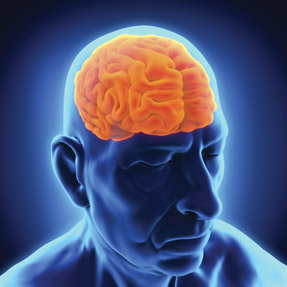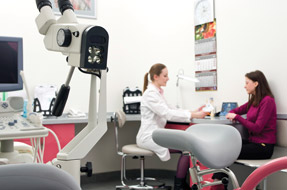Internists likely to see unprovoked first seizure
It's common for internists to see and receive referrals back for unprovoked first seizures, leading to considerations of treatment versus waiting.
An estimated 150,000 adults annually will experience an unprovoked first seizure in the United States, according to a recently issued guideline on management of an unprovoked first seizure in adults by the American Academy of Neurology (AAN) and the American Epilepsy Society (AES).
“It is very common for patients with an unprovoked first seizure to be seen by a primary care physician or internist, or referred back to a primary care physician if they first present to the emergency department,” said Allan Krumholz, MD, professor of neurology at the University of Maryland School of Medicine in Baltimore and director of the Maryland Veterans Affairs (VA) Epilepsy Center of Excellence.

Dr. Krumholz was the lead author of the AAN/AES guideline, which issued a Level A recommendation for physicians to inform patients with an unprovoked first seizure that their risk for recurrence is estimated to be between 21% and 45% within the first 2 years.
Although this guideline does not necessarily change clinical practice, Dr. Krumholz said that it should draw attention to the importance of a discussion between the patient with an unprovoked first seizure and the treating physician regarding the risks and benefits of treatment compared with waiting.
Patient presentation
Whether an internist plays a primary role in the management of patients with an unprovoked first seizure may depend in part on their geography, according to Carl W. Bazil, MD, PhD, director of the division of epilepsy and sleep at Columbia University College of Physicians and Surgeons in New York City. Patients living in major metropolitan areas may be referred directly to a neurologist, whereas patients living in more rural areas may see a primary care physician for treatment.
“However, I think it is perfectly appropriate for internists to manage an uncomplicated seizure disorder, particularly if it's new onset,” Dr. Bazil said.
The presenting symptoms for a seizure can vary greatly. Many people associate seizures with a grand mal seizure, or a generalized tonic-clonic seizure, which involves violent muscle convulsions. In these cases, many patients will present first to an emergency department and later be referred to a primary care physician for follow-up, Dr. Bazil said. However, patients who suffer from more subtle seizures may see an internist first.
“Patients may describe having an episode where they were confused, come in with a memory complaint, or symptoms that even look more like a stroke,” said Barbara A. Dworetzky, MD, chief of the division of epilepsy and EEG at Brigham and Women's Hospital in Boston. “It is important to have an open mind about what the symptoms are and think about the differential of transient neurologic event.”
Evaluation of seizure
The first step in evaluating a patient for an unprovoked first seizure is performing a thorough history and physical examination, the experts agreed.
Dr. Krumholz said that when physicians suspect a first seizure in patients who present with symptoms that are not similar to a grand mal seizure, a good history will often uncover the fact that this seizure may not really be the patient's first.
To help get more information, Dr. Dworetzky said that it is always helpful to talk to a witness, if there was someone around during the event, because the patient may not remember precisely what happened.
“If you can get some answers by getting a description of what happened, you are at an advantage,” Dr. Dworetzky said.
Next, she advised physicians to look for possible provoking factors such as fever, sleep deprivation, and alcohol or illicit drug use, as these factors would suggest that there is no need for treatment for epilepsy.
Finally, physicians should assess a patient's likelihood of having a second seizure. A guideline on evaluation of an unprovoked first seizure released by the AAN/AES in 2007 recommended that an electroencephalogram (EEG) be considered a routine part of the evaluation of patients with an unprovoked first seizure. According to the guideline, an EEG revealed abnormalities in about 23% of patients.
The EEG is performed to confirm whether the episode is epilepsy and to determine whether there are generalized spike and wave-type discharges or focal spikes, which are associated with a greater risk for recurrence. Dr. Krumholz added that patients should undergo an EEG within 24 to 48 hours of presentation.
Brain imaging, such as computed tomography or magnetic resonance imaging, also revealed significant abnormalities in about 10% of patients and can be another key part of routine evaluation, according to the 2007 guideline.
Mimicking conditions
“Physicians have to be cognizant that there are other conditions that are similar to seizure,” Dr. Bazil said. “The obvious issue with diagnosing seizure is that the physician almost never sees it happen.”
Among the most important mimicking conditions to consider is syncope. “We are all taught that fainting is preceded by feeling light-headed or is caused by standing for a long period of time, and, like seizures, may hit in seconds with no warning,” Dr. Bazil said. “One common misconception, though, is that if a witness sees clonic movements after a person loses consciousness, that it is a seizure, but that can happen with syncope as well. Similarly, incontinence often occurs during grand mal seizures but can also happen with syncope.”
Another condition that mimics epileptic seizures is psychogenic nonepileptic seizures, which are not caused by abnormal electrical discharges in the brain.
“This is where the event was not epilepsy, but where patients have a stressor that they may or may not be aware of and have very bizarre events that look like epileptic seizures where they may experience unresponsiveness or even have convulsive movements,” Dr. Dworetzky explained. Psychogenic nonepileptic seizures are often treated in conjunction with a psychiatrist and a neurologist.
Although these 2 are among the most common mimics, Dr. Bazil added that many other conditions could be confused for seizure, including unusual migraines, stroke, transient ischemic attack, vasovagal syncope, arrhythmias, and sleep disorders.
Treatment options
If it is confirmed that a patient has had a seizure, physicians and patients must then decide whether to initiate antiepileptic treatment or wait until a second seizure. The new AAN/AES guideline states that immediate antiepileptic drug therapy versus delayed therapy is likely to reduce recurrence risk within the first 2 years but may not improve quality of life. Over the longer term, defined as more than 3 years, immediate treatment with antiepileptic drugs is unlikely to improve sustained seizure remission, the guideline said.
“Physicians must weigh the risk for recurrent seizure in each individual,” Dr. Krumholz said. “For example, if that person has to drive to work every day, I may be more inclined to treat so they do not have a second seizure in the near future. On the other hand, if the patient is inclined to bad drug reactions or is hesitant to take medications, I may wait for another seizure to occur.”
Whatever the primary care physician chooses to do, it is important to remember that the prognosis in these patients is fairly good in the intermediate and long term, Dr. Krumholz said, with about 75% of people remaining seizure free.
Dozens of available medications can be used for patients with a new-onset seizure, Dr. Bazil said, which means that physicians are often left to choose a medication based on patient factors or side effect profiles. For example, he said, certain anticonvulsants are also used to treat mood disorders and so may be appropriate in patients with a pre-existing mood disorder. In contrast, other medications are known to exacerbate mood disorders and should be avoided in these patients. Some anticonvulsant medications cover a broader spectrum of seizure types but must be started slowly, while others are not broad spectrum but start protecting against seizures much more quickly.
“One way of thinking about choosing a medication, though, is that if it is the right drug, it may be worth the wait of a couple weeks to get a patient started on it,” Dr. Bazil said.
Dr. Dworetzky noted that choosing the right medication is just 1 situation where referral to a neurologist or co-management may be the best course of action. For example, certain medications for epilepsy may cause birth defects and should be avoided in women with child-bearing potential. Primary care physicians may also encounter patients with a seizure who are already on a wide variety of medications, and they may not be comfortable prescribing the appropriate antiepileptic medication in these cases.
In addition, if a primary care physician is managing a patient with an unprovoked first seizure whom they suspect might also have depression, comanagement is a wise course, Dr. Dworetzky said, as there can be an increased rate of suicidality within the first 6 months of a new diagnosis of seizure.
“I think that internists should know how to manage unprovoked first seizure because it is so common,” Dr. Dworetzky said. “If the physician is not comfortable talking to a witness or is uncertain that the event was a seizure, referral is always helpful, even if it eventually leads to the patient returning to the internist for treatment.”



